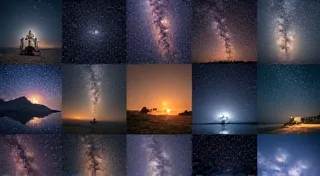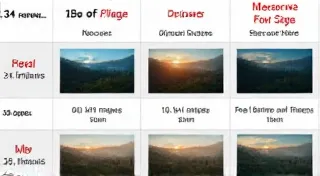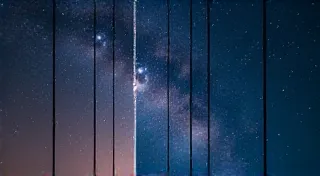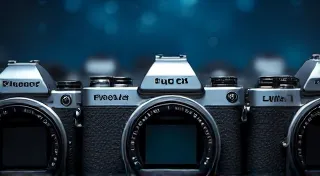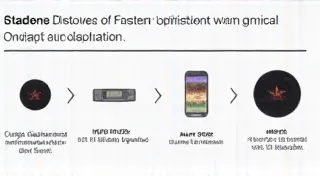The Silent Echoes: Finding Narrative in the Galactic Background
We, as astrophotographers, are often drawn to the dazzling display of individual stars and galaxies. A fiery nebula here, a globular cluster there – each a vibrant focal point in the cosmic panorama. But what if the real story lies not within those brilliant beacons, but in the space between them? What if the seemingly uniform galactic background – the subtle, ethereal glow that permeates the night sky – holds narratives waiting to be unveiled?
My own journey towards appreciating this "skyglow" began unexpectedly. I’m an accordion collector, a passion inherited from my grandfather. He wasn's just a player; he was a repairman, meticulously restoring antique instruments, each one a testament to forgotten craftsmanship. There's a quiet dignity in those aged bellows, in the worn keys, in the faint scent of wood and varnish. It’s a story etched in material, a silent echo of a life dedicated to music. And, oddly enough, contemplating the textures and the quiet history held within those instruments helped me see the night sky in a completely different way.
Just as a perfectly restored accordion speaks of dedication and artistry, so too does the galactic background whisper of the universe’s own ancient processes. It’s not a blank canvas; it’s a composite of light from countless galaxies, scattered across billions of light-years. It’s a faint but persistent reminder that we’re embedded within something vast and unknowable.
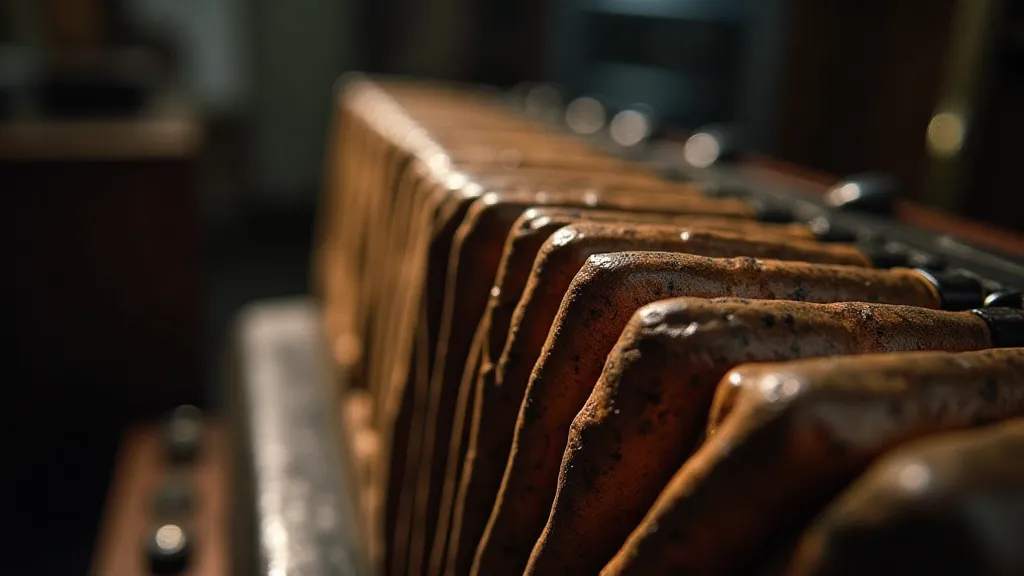
Beyond the Stars: Understanding the Galactic Background
Most astrophotographers naturally focus on the brighter objects – and rightfully so. Those are the visual triumphs, the immediate rewards. But ignoring the background is like framing a portrait and then focusing only on the subject's nose. You miss the context, the mood, the overall story. Achieving stunning results requires the right equipment too; often, beginners find themselves overwhelmed by the sheer number of options. For those just starting, learning about essential astrophotography equipment is a crucial first step.
The galactic background light arises from several sources. Primarily, it’s the integrated starlight from galaxies so distant that their individual stars are indistinguishable. It also incorporates the faint glow of the intergalactic medium, and even the scattering of light by dust within our own galaxy. This subtle glow is generally quite faint, meaning long exposure times – often several hours – are required to capture it.
Traditionally, many have considered this light a nuisance – something to be minimized and subtracted during image processing. However, by embracing this subtle glow, by understanding its origins and nuances, we can transform it from a technical challenge into a powerful storytelling tool.
Long Exposure and Subtle Revelation
The cornerstone of revealing the narratives hidden within the galactic background is, unsurprisingly, long exposure photography. Shorter exposures will simply wash out the faint light, rendering it invisible. Think of it like trying to hear a distant melody – you need time to allow the sound to fully resonate. Achieving long exposures often requires a sturdy tripod and precise guiding.
Experiment with exposure times ranging from 30 minutes to several hours, depending on your equipment and the darkness of your location. Stacked images – multiple long exposures combined – are essential for minimizing noise and maximizing faint signal. This process mimics the gradual accumulation of details in a restored accordion—each meticulous step building upon the last. Careful planning and understanding the relationship between focal length and exposure time will also contribute to better results, which many beginners are unfamiliar with.
Consider using a sequence of exposures with slightly different guiding corrections. This helps account for subtle shifts in the sky and further reduces trailed artifacts. Learning to manage and correct these types of errors is an ongoing learning process for most astrophotographers.
Color and Composition: Painting with Cosmic Light
The galactic background isn't monochrome; it possesses subtle color variations. These colors often arise from the redshift of light from distant galaxies – a phenomenon tied to the expansion of the universe. While these variations are faint, they can be brought out through careful image processing.
Experiment with color balance adjustments, curves manipulation, and subtle saturation enhancements to reveal these subtle hues. Don't be afraid to push the colors a little, but be mindful of maintaining a sense of realism. Remember, you’re not trying to create a fictional landscape; you’re revealing a hidden dimension of the real universe. Many find the entire process of post-processing to be quite complex; a good beginner’s workflow guide can be very useful.
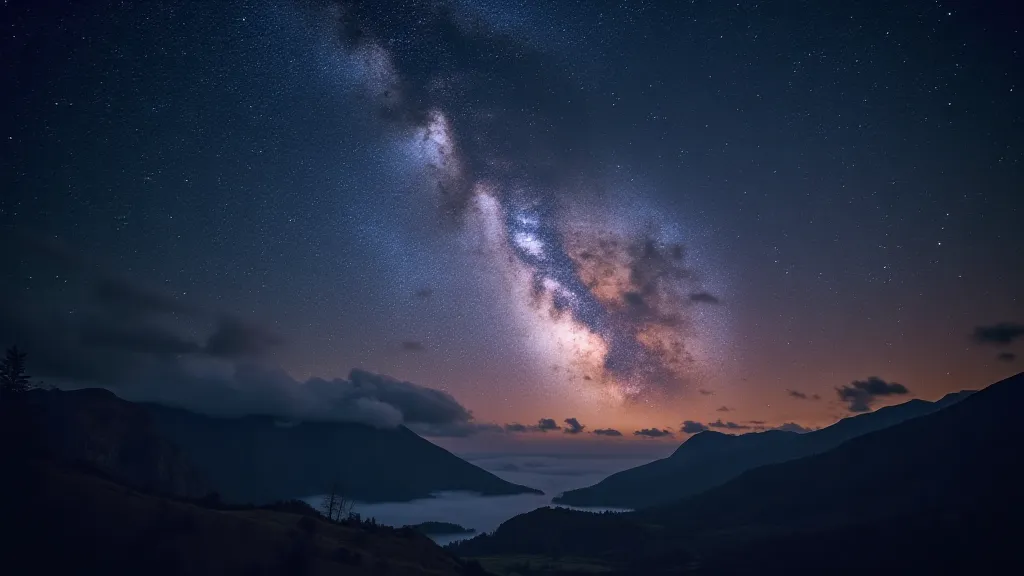
Composition is another crucial element. While the focus is on the background, strategically placed foreground elements – a silhouetted tree, a distant mountain range – can provide context and scale, drawing the viewer’s eye and adding depth to the image. Think of it as the careful placement of bellows and buttons on an accordion, each element contributing to the instrument’s overall beauty and functionality. Building a portfolio and establishing an online presence can also help show off your compositions.
Image Processing: Gentle Enhancement, Not Radical Transformation
Image processing plays a pivotal role in bringing out the nuances of the galactic background. However, it's essential to approach processing with a light touch. Overly aggressive processing can introduce artifacts and distort the subtle color gradients, ultimately undermining the story you're trying to tell.
Focus on techniques that gently enhance the faint signal and reveal the subtle color variations. Careful attention to noise reduction is also critical, as noise can easily mask the faint background light. Curves adjustments, selective sharpening, and gentle contrast enhancements can all be used to great effect. Learning how to create and manage these adjustments is a core skill for any astrophotographer.
Learn to appreciate the beauty of subtlety. Just as the most skilled accordion repairmen focus on preserving the original character of the instrument, so too should we strive to reveal the inherent beauty of the galactic background, rather than imposing our own artistic vision upon it. This includes finding the right balance between creating something beautiful and something authentic.
The Accordion and the Cosmos: Shared Stories of Time and Craftsmanship
My passion for both antique accordions and astrophotography might seem disparate, but they are connected by a shared appreciation for time, craftsmanship, and the subtle beauty of the overlooked. Both pursuits require patience, attention to detail, and a deep respect for the passage of time. Just as an old accordion tells a story of music, love, and loss, the galactic background whispers of cosmic events that unfolded billions of years ago. Many astrophotographers struggle to find their own unique voice, and sharing your work online is a great way to gain feedback and build a following.
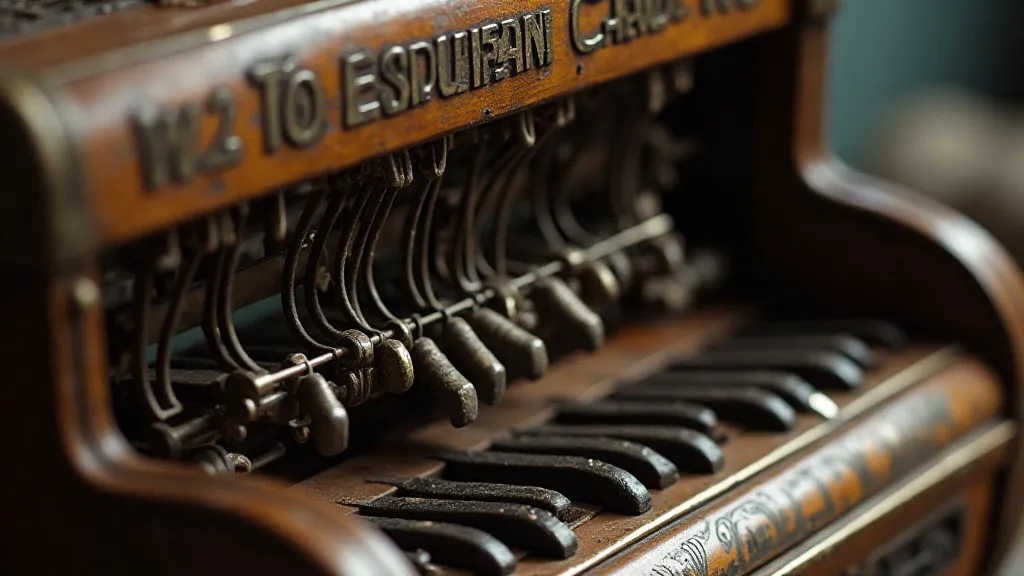
Furthermore, both restoration and astrophotography often involve dealing with imperfections. An accordion may have cracks, dents, or missing parts that require careful repair and restoration. Similarly, astrophotography often involves dealing with noise, light pollution, and atmospheric distortions that can obscure the faint signal. The ability to overcome these challenges and reveal the underlying beauty is what separates the skilled practitioner from the novice.
Ultimately, both pursuits offer a profound sense of connection – to the past, to the universe, and to the enduring power of human creativity. An accordion connects us to the musicians who played it, the craftspeople who built it, and the generations who cherished it. Astrophotography connects us to the vastness of the cosmos, the billions of galaxies that populate it, and the humbling realization that we are but a tiny part of something truly magnificent. A deeper look at essential astrophotography equipment can help you on your journey.
By shifting our focus from the individual celestial objects to the vast, subtle background, we can unlock a new dimension of storytelling within astrophotography. We can find narratives etched across the cosmic expanse, narratives that speak of time, distance, and the enduring beauty of the universe. We can learn to listen to the silent echoes of the galaxies, just as we listen to the faint, resonant tones of an antique accordion—and in doing so, we discover a deeper connection to the cosmos and to the enduring power of craftsmanship.
